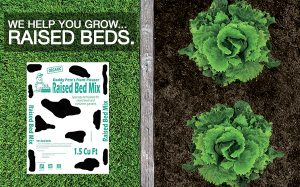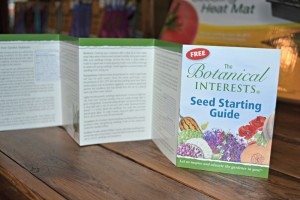Starting Your First Vegetable Garden
Gardening is such a satisfying activity because it results in a tangible product that can be tasted or touched and boosts your sense of accomplishment. I remember the first garden I ever planted because it produced the most beautiful spinach I have ever seen.

I was about five years old and my gardening passions had already surfaced. For someone who has never gardened before, it can be intimidating; just bolster up your confidence and jump in! A few little steps here and there build slowly and become big steps. After all, confidence is gained through experience. Before you know it, you will be picking your own memories!
Where to Begin?
Think about your space, sunlight and how much time and effort you want to put into your garden. Most vegetables need an area with full sun in order to produce fruit. A few pots is a great way to begin if you have limited space or don’t want to spend a lot of time with it; they don’t require the effort of digging up grass and conditioning soil.

For some, a raised bed is the way to go. Many easy-to-assemble kits can be bought or for a more permanent solution you can make your own. For someone with a sunny spot and more space, a nice garden plot can be created. Grass and weeds can be dug up and removed by hand or tiller. Soil is the most valuable part of your garden so it is important to add manure, organic materials or any of the many forms of compost offered at your local garden supply store; it is never possible to have too much of this! Once your soil is ready, everything will fall into place.
What’s Next?
Decide on the vegetables you want to grow and if you will begin with seeds or plants. Some plants, such as tomatoes, need to be set out in the garden as seedlings because they take too long to mature from seed. The crops you choose depend on what you want to achieve and how much time you want to spend.

A good rule of thumb: Beginners should start small. A 10 X 10 foot bed is big enough for a variety of vegetables but small enough not to be a burden. It’s best to start with a diagram. You may use graph paper with a scale of 1/4 inch to the foot for easy reading. With this, you can plan what you will grow this year, in what location, you’ll know the quantity to plant, which crops to locate next to each other and it will remind you next year where you positioned your crops. Keeping records of when seedlings first appear and harvest of fruit will help you learn when to pick early crops, when to make your plantings from year to year and where to rotate your vegetables each year. Note: Crop rotation means not growing the same plants in exactly the same spot for at least two years in succession.
Bits of Advice
– Locate your tallest growing plants at the north end of the garden so they don’t shade the shorter ones.
– Check spacing requirements for each plant.
– Group long-season crops together (such as cucumbers, eggplants, peppers, beans and tomatoes) for ease in preparing soil for succession plantings of short season crops (such as lettuce, radishes, beets, and peas).
– To save space, plant quick growing vegetables between slow growing ones such as radishes between tomato plants. The radishes are harvested before the tomato shades them!
– Growing vine crops on a trellis or fence saves space.
– Most of a vegetable crop matures at the same time so make successions of two weeks in planting your crops for a continuous harvest.

Starting your first vegetable garden may seem difficult to begin with but it will be a cinch once you get the hang of it. Once you get started, you’ll discover what works best for you and your location. For a great variety of plants, seeds, materials and gardening advice come to Fairview Garden Center. Dig in and enjoy!
Happy Gardening!
Fairview Greenhouses & Garden Center




